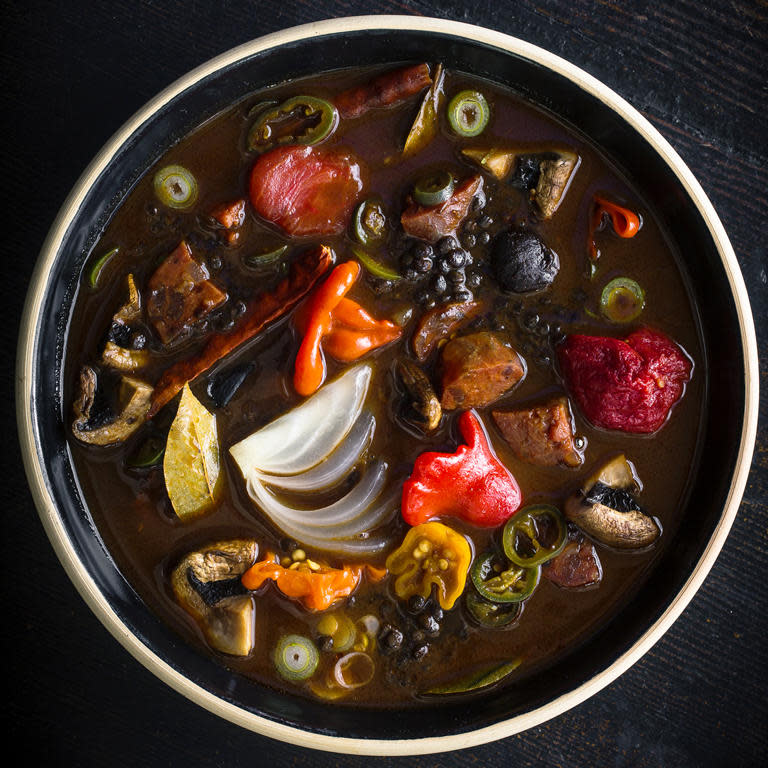What's the Difference Between Sweet, Spicy, and Smoked Paprika?

When it comes to the must-have spices in your cabinets, paprika is at the top of the list. But not all paprika is the same. You can find several different kinds at stores and markets, and each one serves a different purpose.
WATCH: 5 Thing You're Doing Wrong With Spices
Every kind of paprika is made from grinding the dried red peppers of the Capsicum annuum shrub, which is native to areas like Central American, South America, Mexico, and the West Indies. However, depending on the pepper, where it's grown, and how it's prepared, paprika can look anywhere from orange to bright red and taste sweet, smoky, pungent, or spicy.
Different cuisines around the world use this spice to flavor and color food, making paprika a major player in all kinds of dishes you can make at home. To help you decide which kind you should reach for the next time it's in a recipe, we're breaking down the main kinds of paprika and how to make the most of them to achieve the right flavors.
Get the recipe: Flattened Chicken with Almond and Paprika Vinaigrette
Regular paprika

This is the kind that you'll find labeled as simply "paprika" in the grocery store. It won't carry much flavor. It's a mild spice that's mainly used to add color to a dish or to garnish food.
Substitutes
If you don't have this everyday version on hand, you can use sweet Hungarian paprika as a substitute. Because regular paprika is mainly used for color rather than flavor, though, expect the flavor of your dish to change if the recipe calls for a decent amount of the spice. If you're just using paprika for garnish, you shouldn't notice a major shift in taste when you substitute.
Where to Use It
Using regular paprika to add a pop of color to dishes like Classic Deviled Eggs or to create an all-purpose Paprika Rub for chicken, beef, or pork.
Hungarian paprika

Considered the main spice of Hungary, paprika is used in all kinds of the country's dishes, but it's also versatile enough to use in a range of recipes. This kind of paprika comes in eight varieties and covers several different flavors, from mild to pungent to spicy.
The most popular kind in the U.S. is what you'll find labeled as "Sweet Hungarian Paprika," which is usually the bright red édesnemes variety and has a slightly pungent flavor. You may also see hot Hungarian paprika in stores. This version is sweet with a touch of spice.
Substitutes
If a recipe calls for sweet Hungarian paprika and you don't have it in your spice rack, reach for ancho powder if you have it or chili powder. Both have a mild heat that closely mimics paprika. Ancho powder will add a bit of smokiness to your dish while chili powder—which is a blend of spices—carries earthy notes.
If you don't have hot Hungarian paprika on hand, combine sweet paprika and cayenne powder to achieve the flavor and spice level you're looking for.
Where to Use It
Use this kind of paprika for classic Hungarian recipes like Goulash and Chicken Paprikash that put the country's spice front and center. We also recommend using it to add color and flavor to recipes like Seared Cod with Swiss Chard and Almonds and Black Garlic and Lentil Soup.
Smoked paprika

You might also see this variety labeled "smoked Spanish paprika" or Pimentón de la Vera. Because the peppers are smoked and dried over an oak fire before they're ground, this type will add smoky, woodsy undertones to your dish.
If you want smoky and spicy, look for hot smoked paprika, also called picante. This is the kind of paprika you'll want to use in Mexican dishes like chorizo or paella.
Substitutes
If you don't have smoked paprika on hand or can't find it at the store, use chipotle powder—which is made from smoked jalapeño peppers—to achieve a similar smokiness. However, this alternative will add spice to your dish, so you may want to start your substitution by adding half of the amount listed on the recipe and taste as you cook to see if you need to add more.
Where to Use It
Use smoked paprika to bring an earthy, savory and sometimes spicy dimension to a wide range of recipes like Chorizo Meatballs with Manchego Cheese, Spanish Pork with Apple-Citrus Salsa, Bacon-Smoked Paprika-Cheddar Bars, and Mushroom Stroganoff.

